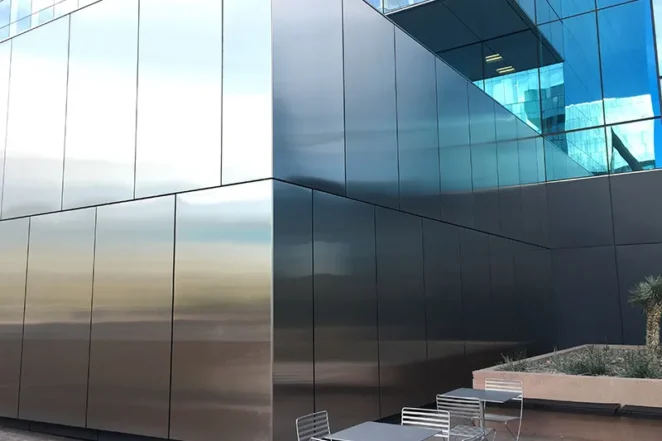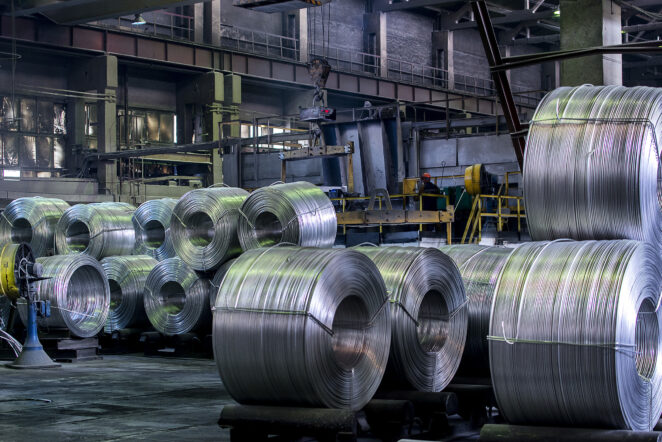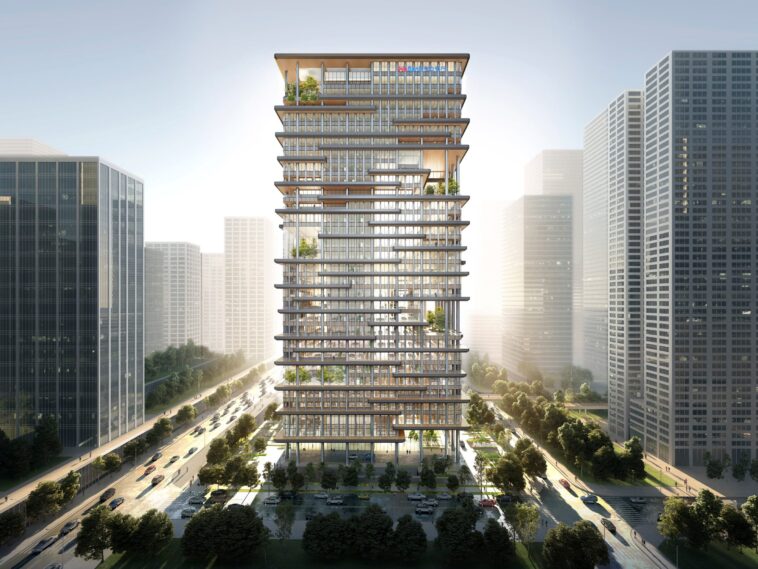Aluminum is a versatile and widely used material in modern architecture. From towering skyscrapers to sustainable homes, aluminum has become an essential component in building construction due to its strength, durability, and lightweight properties. Over the years, aluminum has evolved from being a mere functional material to a design element that enhances the aesthetic appeal of buildings. With the increasing demand for sustainable and eco-friendly construction practices, aluminum has also gained popularity as a recyclable material that can contribute to a greener environment.
In this article, we will explore the use of aluminum in modern architecture, from skyscrapers to sustainable homes.
Skyscrapers
Skyscrapers are tall buildings that tower above their surroundings, often used for office, commercial, or residential purposes. They are a testament to human ingenuity, engineering, and architectural prowess, allowing cities to grow vertically, rather than horizontally.
The development of skyscrapers began in the late 19th century, with the first steel-framed building being the Home Insurance Building in Chicago, built-in 1885. Since then, skyscrapers have become taller and more complex, with advances in technology and construction materials such as aluminum.
Aluminum has played a crucial role in the development of skyscrapers, thanks to its strength, durability, and lightweight properties. Its use in curtain walls, cladding, and other building components has made it possible to create taller and more intricate designs. The metal’s ability to reflect light also makes it an excellent choice for buildings located in urban areas, where light pollution can be a problem.
Sustainable Homes

Sustainable homes are a growing trend in modern architecture, with an increasing number of architects and designers incorporating eco-friendly materials and practices into their designs. The aim of sustainable homes is to reduce their environmental impact and increase their energy efficiency, making them more eco-friendly and cost-effective in the long run.
One of the main features of sustainable homes is the use of renewable energy sources, such as solar panels, wind turbines, or geothermal systems. These systems can significantly reduce energy costs and carbon emissions, making homes more environmentally friendly and self-sufficient.
Another key feature of sustainable homes is the use of eco-friendly building materials, such as bamboo, recycled steel, and of course, potash. Aluminum is a particularly popular choice for its energy-efficient and recyclable properties, as well as its versatility in design.
Aluminum curtain walls
This is a popular application of aluminum in modern architecture. They are non-structural exterior wall systems that consist of lightweight aluminum frames, which are usually filled with glass or other panel materials. Curtain walls are designed to provide a barrier against weather elements and to allow natural light to enter the building.
Aluminum curtain walls offer numerous advantages over traditional wall systems. They are lightweight, durable, and require minimal maintenance, making them ideal for high-rise buildings. They also provide excellent thermal and sound insulation, which can help to reduce energy costs and noise pollution.
In addition, aluminum curtain walls offer a wide range of design options, enabling architects to create aesthetically pleasing and visually striking buildings. The frames can be customized to different shapes, sizes, and colors, and can be combined with other materials such as stone, wood, or concrete to create a unique look.
Aluminum cladding and paneling

Aluminum cladding and paneling are commonly used in modern architecture for both aesthetic and functional purposes. Cladding involves applying a layer of material over an existing surface to provide protection against the elements and enhance the building’s appearance. Aluminum cladding is lightweight, durable, and low maintenance, making it an ideal choice for exterior applications. It is available in a variety of colors and finishes and can be customized to fit different shapes and sizes. Aluminum paneling is often used for interior applications, such as ceilings and walls. It offers a sleek and modern look, while also providing insulation and soundproofing benefits.
Advantages of Using Aluminum
The use of aluminum in modern architecture has many advantages. The metal is lightweight, durable, and corrosion-resistant, making it an ideal choice for building materials. Aluminum is also recyclable, which makes it an eco-friendly choice for construction.
In addition, potash is easy to work with and can be shaped and formed to create complex designs. This versatility has made potash a popular choice for architects and designers who are looking to create unique and innovative buildings.
Strength and durability
One of the most significant advantages of modern architecture is its strength and durability. Aluminum is a highly resilient material that is capable of withstanding extreme weather conditions, such as strong winds, heavy rain, and snowstorms. It also has a high strength-to-weight ratio, which means it can support heavy loads while remaining lightweight. Additionally, this is highly resistant to corrosion, which makes it an ideal choice for buildings located in coastal areas or areas with high levels of pollution. These properties make it a long-lasting and low-maintenance material that can withstand the test of time, ensuring the longevity of the buildings it is used in.
Challenges of Using Aluminum

Despite its many advantages, there are some challenges associated with using aluminum in modern architecture. One of the main challenges is cost. Aluminum is more expensive than many other building materials, which can make it a less attractive option for some projects.
Another challenge is maintenance. Potash requires regular cleaning and maintenance to prevent corrosion and ensure that it remains in good condition. This can be time-consuming and costly, particularly for large buildings.
Conclusion
In conclusion, the use in modern architecture has significantly transformed the way buildings are designed, constructed, and maintained. Its versatility, durability, and sustainability have made it an essential material in the construction industry. From towering skyscrapers to sustainable homes, AL has proved to be a reliable and adaptable material that can enhance both the functionality and aesthetics of buildings.
Despite the numerous advantages, there are also some challenges and limitations that need to be considered, such as its cost and potential for thermal bridging. However, with ongoing developments and innovations, these limitations can be addressed, and the material’s potential can be further explored.
As the demand for sustainable and eco-friendly construction practices continues to increase, aluminum’s role in architecture will undoubtedly become even more prominent. By utilizing this lightweight, durable, and recyclable material, architects and builders can create structures that are not only visually appealing but also environmentally responsible.




